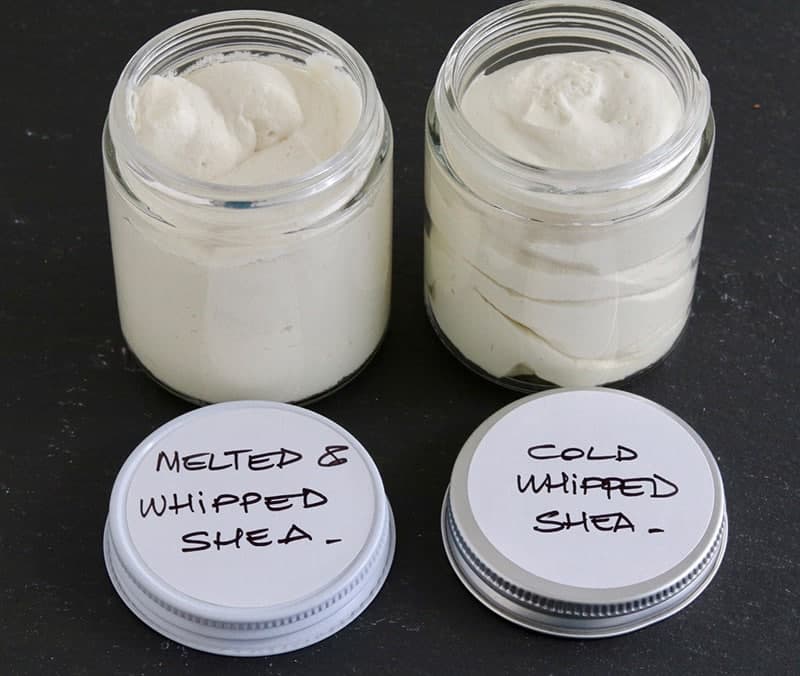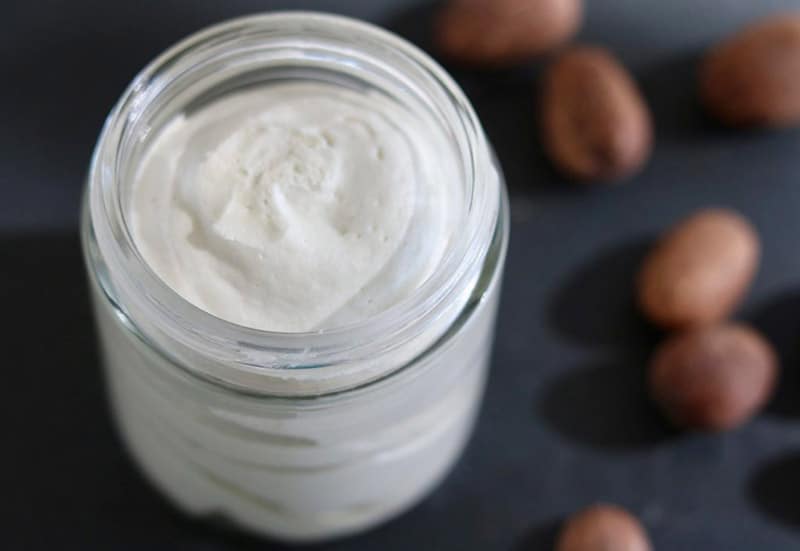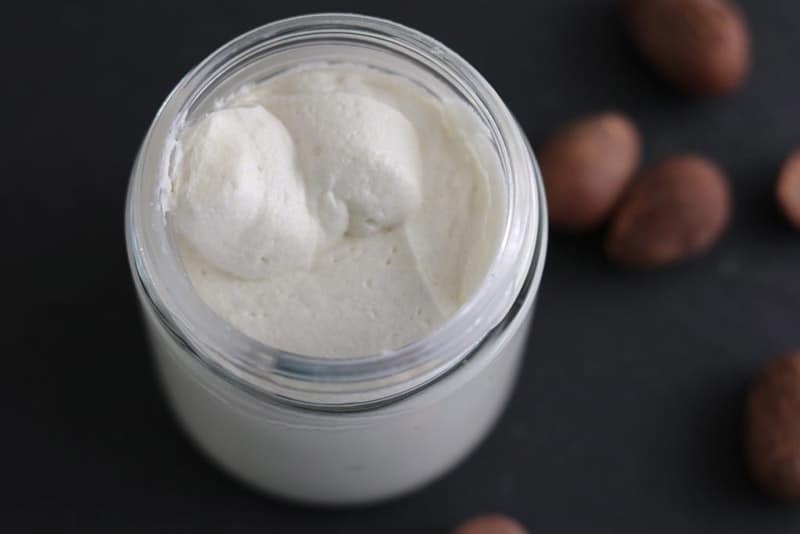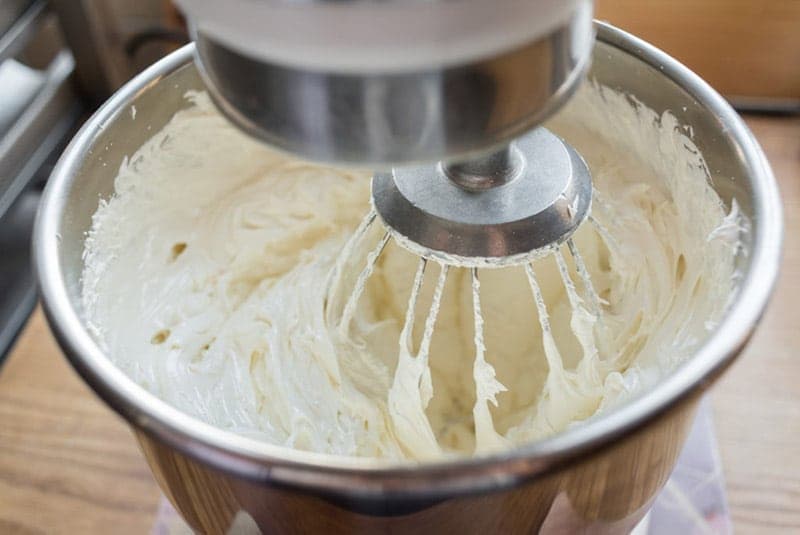Melting Shea Butter Before Whipping is Not Always a Good Idea
If you are like me, once you learn one way of doing something, you stick to it. Whipping shea butter is no different: I learned to first melt it all the way, then add other ingredients (carrier oils, vitamin E, essential oils), place it in the fridge to partially solidify, then whip it to perfection. Here is one of my videos following this method:
The problem after a few years of doing it this way has been time and space: if you have a small batch of about 1-2 lbs of product, following this method of melting, cooling, whipping takes a couple of hours and results in a beautiful creation.
However, when you start melting 5-10 pounds of shea butter, plus other ingredients, it starts to get overwhelming: your double boiler system takes a long time to slowly melt the butter, removing it from the heat without spilling anything is nerve wracking, and finding room in your fridge is the next challenge (by the way, make sure you cover your container of melted shea when you place it in the fridge or it will pick up some of the smells from other items stored). And that’s when I realized that, besides needing a dedicated room with a stove and fridge for my whipped skin care concoctions, I should probably consider not melting the shea butter and just whipping it like you whip – guess what? – edible butter. Or cream cheese.
How do you melt & whip shea butter correctly?
After making my debut shea video, I noticed that the method above gave it a nice airy texture at first, but after a few days the whipped shea butter would harden up as much as the regular, un-whipped shea. Fast forward to a gazillion experiments later, I have come up with the right sequence that gives a whipped butter that stays whipped. Here is how you melt and whip shea to perfection. If you do this right, the air bubbles you introduce in the body butter while whipping will stay, resulting in a stable fluffy structure. Unless of course your body butter melts to a liquid due to hot weather, then the whipped effect will be gone – welcome to the world of truly natural skin care.
- Slowly melt the shea butter in a double boiler (bain-marie in French or bagno maria in Italian) and melt it at slow heat. A burned butter is never a good idea, so slow and steady is the way to go
- Turn off the heat and remove the butter from the burner. At this stage you can add carrier oils and vitamin E, but it’s still too hot to add essential oils
- Let it cool off to room temperature either by setting aside, or by placing your container in a bowl with ice to speed up the process
- Stir it occasionally while you are waiting for it to cool off close to room temperature, or about 75 F (23 C)
- Add the essential oils if applicable
- WHIP IT! That’s right, you whip it while it’s still liquid. I am not sure on the science behind it, but if you skip this step, it won’t turn out as nice
- Put it in the fridge until it’s completely solid
- Take it out of the fridge and let it soften enough to be able to WHIP IT AGAIN
- And you’re done!
- Now you can scoop the shea in your final containers, or you can pour the whipped butter in a zip lock bag, cut a corner at the end of it, then squeeze into your jars
While you get a wonderful end-product, the downside is that this process takes hours depending on the size of your batch.
How to save time: cold-whipped shea butter
I don’t want to keep a secret until the end of this article, so I will tell you that cold-whipped shea butter looks exactly the same as melt-and-whip shea. I tried it, here’s the evidence:

Go ahead and zoom in – they have the same exact texture. Here’s how the cold-whipped shea butter above was made:
- Cut the shea butter in small chunks
- Put the chunks of shea in a bowl or stand mixer like a KitchenAid
- Start whipping it on high, scrape down the butter that sticks to the sides, and keep whipping until it looks homogenous
- Slowly add carrier oils and essential oils as needed and keep whipping until it’s the right consistency
- And you’re done!
- Now you can scoop the shea in your final containers, or you can pour the whipped butter in a zip lock bag, cut a corner at the end of it, then squeeze into your jar
This, unlike the melt-and-whip method, takes about 1 hour (depending on the size of your batch).

And below is the whipped shea made by patiently melting shea butter. Compare the two and tell me they don’t look like identical twins.

The cold-whipping method only applies to soft butters
Cold whipping can only be done with soft butters like Shea and Mango butter. I use Unrefined Shea Butter or 100% Pure Mango Butter which you can find here.
Depending on the season, these butters may vary slightly in hardness, but both shea and mango butter can be cut in pieces, put in a bowl and whipped without any melting. However, there are some hard butters like Cocoa and Kokum, as well as waxes that when present in any amount in your skin care recipe, require the melting step.
We’re done with today’s tutorial! I hope you learned something new, I’d love to hear from you in the comments: what’s your to-go method of making a body butter? What questions do you have? Also if you would like more information and recipes for DIY skin care and beauty products I have an ebook which you can download for free here
Thanks again for stopping by!


